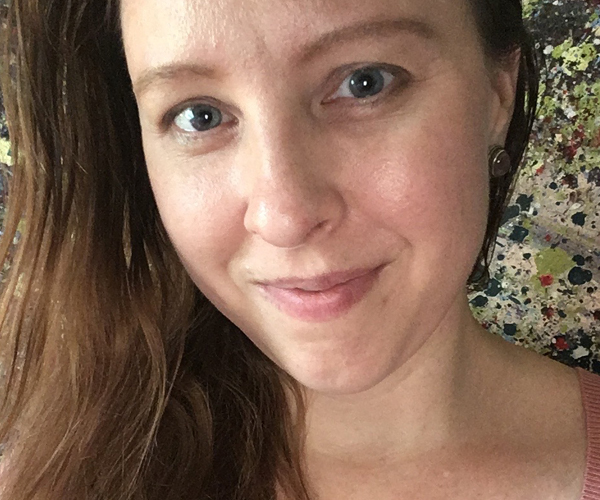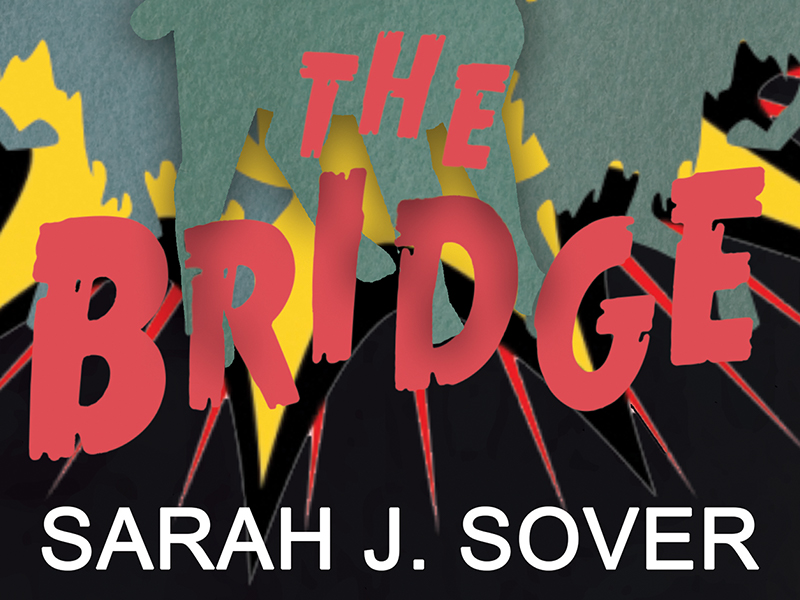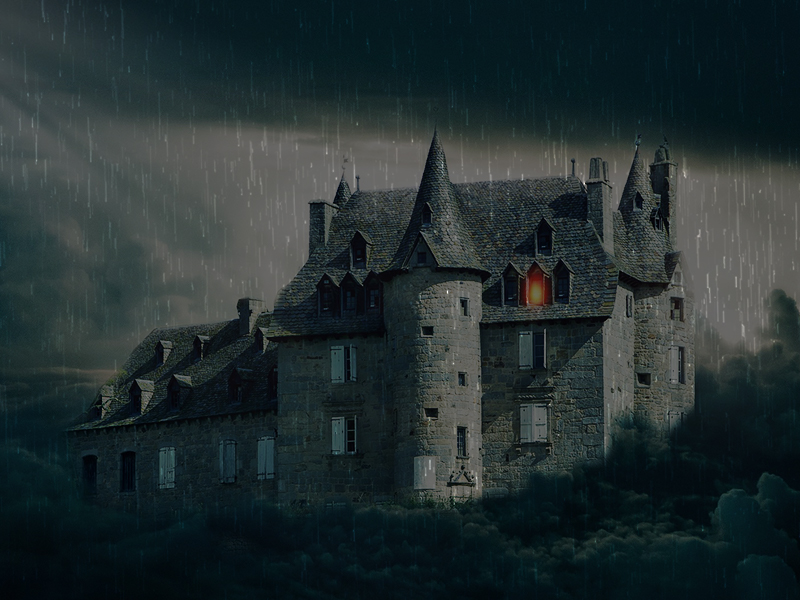Welcome to Debut!, a new series on Hàlön Chronicles to highlight debut authors and their novels.
Today we’re catching up with author Erin Bartels and her Women’s Fiction Debut, We Hope for Better Things.
The book is available 1 January 2019. Don’t forget to click on the image below and take a closer look at this absolutely gorgeous cover.
Tell us about yourself.
I’ve worked in publishing for 17 years, most of that time as a copywriter in the marketing department. I’ve been married to my high school sweetheart for 18 years. I have a 10-year-old son who is a 1st degree black belt and a 6-year-old chihuahua mix who is a total spaz. We live in a little brick house about halfway between angry protestors at the state capitol and couch-burning frat boys at Michigan State University. And yet, it is really quite peaceful.
How did you get into writing?
I was an English major, so I adore great writing, be it novels, poetry, plays, short stories, or essays. After reading other people’s novels for work for about a decade, I think it was inevitable that I would try my hand at writing one.
Please describe what the book is about.
“In this powerful first novel . . . Bartels successfully weaves American history into a deeply moving story of heartbreak, long-held secrets, and the bonds of family.”–Publishers Weekly, Starred Review
The story begins when journalist Elizabeth Balsam is tasked with returning a box of never-before-seen photos of the 1967 Detroit riot to a relative she didn’t know she had. Elizabeth wants to use them to further her flagging career. But as she connects with her long-lost great-aunt in the family’s 150-year-old farmhouse outside of Detroit, she begins to uncover the stories of two women who lived in that very house a century apart, who were involved in the Underground Railroad and the tumultuous Civil Rights Era. What she discovers about her family’s past has repercussions for her own future
 ^click to enlarge^ |
When Detroit Free Press reporter Elizabeth Balsam meets James Rich, his strange request–that she look up a relative she didn’t know she had in order to deliver an old camera and a box of photos–seems like it isn’t worth her time. But when she loses her job after a botched investigation, she suddenly finds herself with nothing but time.
At her great-aunt’s 150-year-old farmhouse, Elizabeth uncovers a series of mysterious items, locked doors, and hidden graves. As she searches for answers to the riddles around her, the remarkable stories of two women who lived in this very house emerge as testaments to love, resilience, and courage in the face of war, racism, and misunderstanding. And as Elizabeth soon discovers, the past is never as past as we might like to think. Debut novelist Erin Bartels takes readers on an emotional journey through time–from the volatile streets of 1960s Detroit to the Underground Railroad during the Civil War–to uncover the past, confront the seeds of hatred, and discover where love goes to hide.. Read more > |
Where did you get the idea?
Because I take a lot of photos, I’m not in many photos unless it’s a selfie. I started thinking about the fact that every picture we see is seen through the eyes of an unseen observer. There’s always one more person than you are seeing in the photo. And I started to wonder what you could know about that unseen presence hovering outside the frame. Then everything just ballooned from there.
What’s the story behind the title?
We Hope for Better Things is the English translation of the first half of the Latin motto of the City of Detroit: Speramus meliora; resurgent cineribus. We hope for better things; it will rise from the ashes. Father Gabriel Richard penned the motto after most of the city was destroyed in a terrible fire in June 1805. Only a riverside warehouse and the brick chimneys of the wooden homes survived. I suggested this title to my publishing team (though it was not what I had been calling the book for years) because it captured the spirit of Detroit where much of the story is set and ties into the theme of the book.
How long did you take to write this book?
The first inkling of the idea came in 2011 or 2012. I researched for all of 2013. I drafted it in 65 days at the beginning of 2014. Then it was revise, revise, revise. I signed with my agent in 2015. We went on submission in 2016. In 2017, I signed my publishing contract. And it finally hits shelves January 1, 2019. It’s been a long road.
“I haven’t read such a powerful, moving story since I read To Kill a Mockingbird.”–Colleen Coble, USA Today bestselling author
What kind of research did you do for this book?
I read well over a thousand pages on women in the Civil War, Michigan’s involvement in the Civil War, the Underground Railroad, funerary practices in the Victorian Era, Reconstruction, the Great Migration, Jim Crow, the development of the city of Detroit, civil unrest and the Detroit riot of 1967, and more. I also watched documentaries, listened to podcasts, and interviewed people who had lived in Detroit in the 1960s.
Are you a plotter or a pantser?
I’m a plantser. A little of this, a little of that. If I plot out too thoroughly, I lose the desire to write the story because there is nothing to discover. So I keep things fast and loose but I do have an idea of what I want to say and how I intend to say it.
What is the most challenging part of your writing process, and why?
Finding time. I work full time. I’m a mom. I have a house to keep up. Etc. Finding time is always, always a struggle. But if something is important to you, you make it work.
Where do you normally write?
I seem to write most in our cigar room. Yes, our house has a cigar room. It used to be a very feminine sunroom. Then we ripped up the gross old carpet and put down dark wood laminate. I painted the walls black and the ceiling gray. We threw in a few chairs we got from Don Draper’s estate sale. And now we have a swank Mid-Century-looking cigar room with lots of ambiance. It’s the perfect place to write.
If you could tell your younger writing self anything, what would it be?
It’s going to take longer than you think—and that’s a good thing.
How many unpublished and half-finished books do you have?
I have a practice novel that, by the grace of God, did not get published. I have started and abandoned a few things along the way. And I have a good chunk of a TV pilot written.
Do you have any writing quirks?
Some people find it strange how much I like the revision and editing part of writing over and above the drafting part.
Apart from novel writing, do you do any other kind(s) of writing?
I write poetry, generally during seasonal transitions—winter to spring, summer to autumn, and autumn to winter. Apparently, I don’t find summer terribly inspiring.
What do you like to do when you’re not writing?
I love to get outside as far away from civilization as I can manage. Sometimes that’s the local nature center. Sometimes that’s Michigan’s Upper Peninsula. I love photographing the natural world. I also paint in watercolor and oil.
Share something about you most people probably don’t know.
My seagull impression is uncanny.
Which book influenced you the most?
I think my view of the value of the natural world and the careless destructiveness of mankind was deeply impacted by reading Watership Down by Richard Adams a couple dozen times in my childhood and young adulthood.
What are you working on right now?
For National Novel Writing Month, I started drafting a story about two very different sisters on a hiking trip gone wrong. My sister and I take an annual backcountry camping trip, but the story is not about us. We’re both introverts of German stock on our dad’s side, so most of the time we’re hiking we don’t even talk. That would be pretty boring to read about!
What’s your favorite writing advice?
Write the book you want to read. In other words, don’t try to follow trends or make others happy. Write for yourself. There are bound to other people out there who will like it.
The book you’re currently reading
The Patricide of George Benjamin Hill by James Charlesworth
The Weight of Glory by C. S. Lewis
Day by Day through the Gospel of John compiled & edited by Lance Wubbels
What can we expect from your next book?
My second book, The Words between Us, comes out this September. It’s a story about bookstores, books, first loves, and second chances that explores the power of words—the ones we read, the ones we write, and the ones we say to one another. It’s sort of a coming-of-age story mixed with romance and family drama that is a perfect choice for book clubs.

www.erinbartels.com |
ERIN BARTELS is a copywriter and freelance editor by day, a novelist by night, and a painter, seamstress, poet, and photographer in between. Her debut novel, We Hope for Better Things, is scheduled to be released in January 2019 from Revell Books, followed in September 2019 with The Words Between Us, which was a finalist for the 2015 Rising Star Award from the Women’s Fiction Writers Association. Her short story “This Elegant Ruin” was a finalist in The Saturday Evening Post 2014 Great American Fiction Contest. Her poems have been published by The Lyric and The East Lansing Poetry Attack. A member of the Capital City Writers Association and the Women’s Fiction Writers Association, she is former features editor of WFWA’s Write On! magazine. Buy on: Amazon |
Don’t forget to check out this year’s Winterviews and partner interviews. You can also follow this blog and be the first to know when new content is released.



